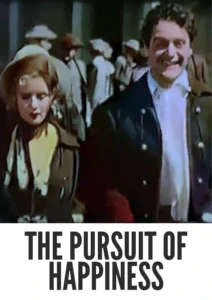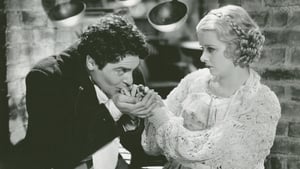Video Sources 0 Views

Synopsis
Love, Liberty, and Longing: The Pursuit of Happiness (1934) in Stunning Color

Step back in time with The Pursuit of Happiness, a charming romantic era film from 1934, now beautifully colorized for a viewing experience like never before. This movie, directed by Alexander Hall, delivers a delightful blend of romance, comedy, and historical drama set against the backdrop of early America. Perfect for fans of classic cinema and those seeking a heartwarming tale of love and freedom, this HD download brings a forgotten gem of early Hollywood to your screen.
The Pursuit of Happiness Storyline: A Revolutionary Romance
The Pursuit of Happiness tells the story of Max (Francis Lederer), a Hessian soldier who remains in America after the Revolutionary War. He encounters the unconventional and free-spirited Prudence Kirkland (Joan Bennett) and is captivated by her charm and zest for life.As Max and Prudence navigate their budding romance, they challenge the rigid social norms of their time, particularly the custom of “bundling,” where courting couples were allowed to share a bed for warmth during courtship, albeit with certain restrictions. Their defiance of these customs leads to humorous and heartwarming situations as they pursue their own definition of happiness. The film explores themes of love, liberty, and the pursuit of personal fulfillment against the backdrop of a young nation finding its identity. Ultimately, The Pursuit of Happiness is a delightful and thought-provoking film that celebrates the courage to defy convention in the pursuit of love and freedom.
Movie Cast
The film features a talented cast of actors who bring this historical romance to life:
- Francis Lederer as Max
- Joan Bennett as Prudence Kirkland
- Charlie Ruggles as Comfort Kirkland
- Mary Boland as Aunt Emily
- Walter Kingsford as Dr. Samuel Kirkland
- Minor Watson as Rev. Peabody
- Irving Bacon as Jigger
- George “Gabby” Hayes as Bill Williams
- Harry Beresford as Gramp
- Adrian Morris as Hank
- Spencer Charters as Jenkins
- Ruth Hilliard as Sarah
Movie Genre
The Pursuit of Happiness falls into the genre of romantic comedy, with elements of historical drama that provide context to the story. Its lighthearted tone and focus on character relationships make it a charming and engaging film.
Historical Context: Pre-Code Hollywood and Early American Values
Released in 1934, The Pursuit of Happiness reflects the pre-code era of Hollywood, a period known for its daring and often provocative themes before stricter censorship was enforced. The film offers a glimpse into early American values and social customs, particularly the practice of bundling, which was a unique aspect of courtship in colonial America. The Pursuit of Happiness provides valuable insights into the cultural landscape of the time and celebrates the pursuit of individual happiness and freedom.
Colorization Details
This colorized version of The Pursuit of Happiness has been meticulously restored using modern digital techniques, enhancing the visual appeal while preserving the film’s original charm and historical accuracy. The colorization process involved carefully analyzing the grayscale tones of the original black and white footage and assigning appropriate colors to each scene. While the specific software used remains proprietary, the techniques employed included advanced algorithms for color palette selection and image enhancement. This painstaking process brings new life to the characters and settings, making the story even more engaging for modern audiences. While some may debate the merits of colorizing classic films, it introduces these films to a broader audience, ensuring their legacy for future generations.
Technical Details
- Director: Alexander Hall
- Screenplay: Stephen Morehouse Avery, J.P. McEvoy
- Based on: the play by Lawrence Langner and Armina Marshall
- Cinematography: Leon Shamroy
- Edited by: Gene Milford
- Production Company: Paramount Pictures
- Distributed by: Paramount Pictures
- Runtime: 94 minutes
Technical Specifications
- Download Format: MP4
- Resolution: HD (1080p)
- Compatibility: Compatible with most devices, including smartphones, tablets, computers, and smart TVs.
Reviews and Critical Reception
The Pursuit of Happiness (1934) is celebrated for its charming story, engaging performances, and historical setting. While it may not be as widely known as some of the more famous films of the era, it remains a delightful and thought-provoking example of pre-code Hollywood cinema. As a relatively obscure but intriguing film, The Pursuit of Happiness provides a unique perspective on early American values and the timeless pursuit of love and freedom.
FAQs
- Q: What is The Pursuit of Happiness about?
- A: The Pursuit of Happiness is a romantic comedy about a Hessian soldier and an American woman who challenge social norms in pursuit of their own happiness.
- Q: Is The Pursuit of Happiness (1934) a well-known film?
- A: While not as famous as some films of the era, The Pursuit of Happiness is a celebrated example of pre-code Hollywood cinema.
- Q: Is this version of The Pursuit of Happiness colorized?
- A: Yes, this version has been professionally colorized to enhance the viewing experience.
- Q: What makes The Pursuit of Happiness interesting for classic film fans?
- A: The Pursuit of Happiness offers a glimpse into pre-code Hollywood and explores themes of love, liberty, and the pursuit of personal fulfillment.
- Q: What is the download format?
- A: The download format is MP4, which is compatible with most devices.
- Q: What resolution is the download?
- A: The resolution is HD (1080p), providing a high-quality viewing experience.
Download Now in HD!
Watch The Pursuit of Happiness Today!











